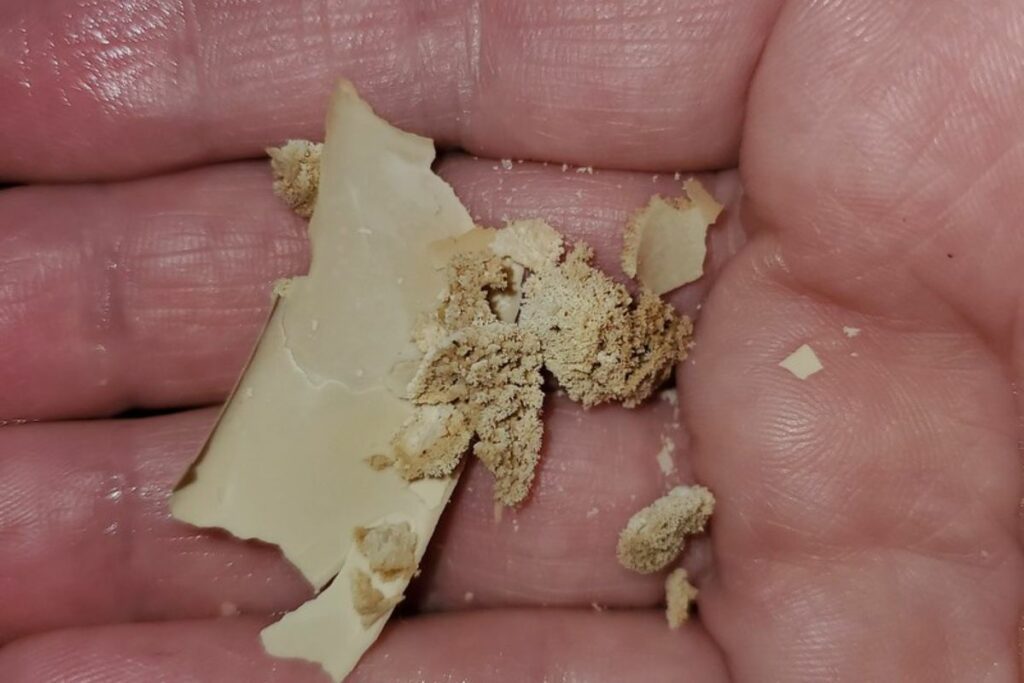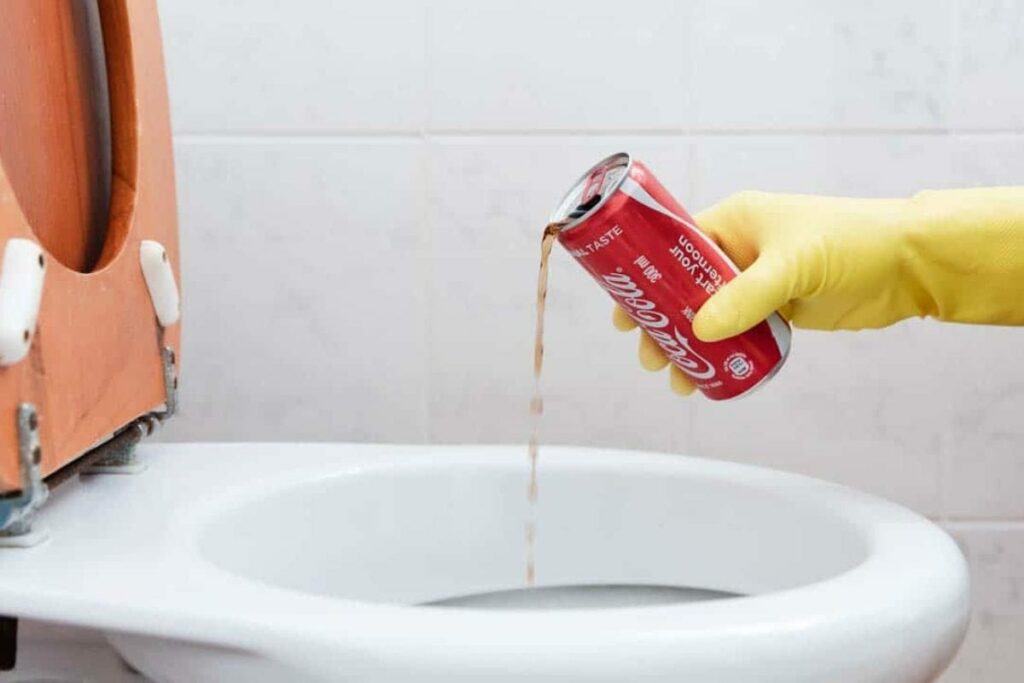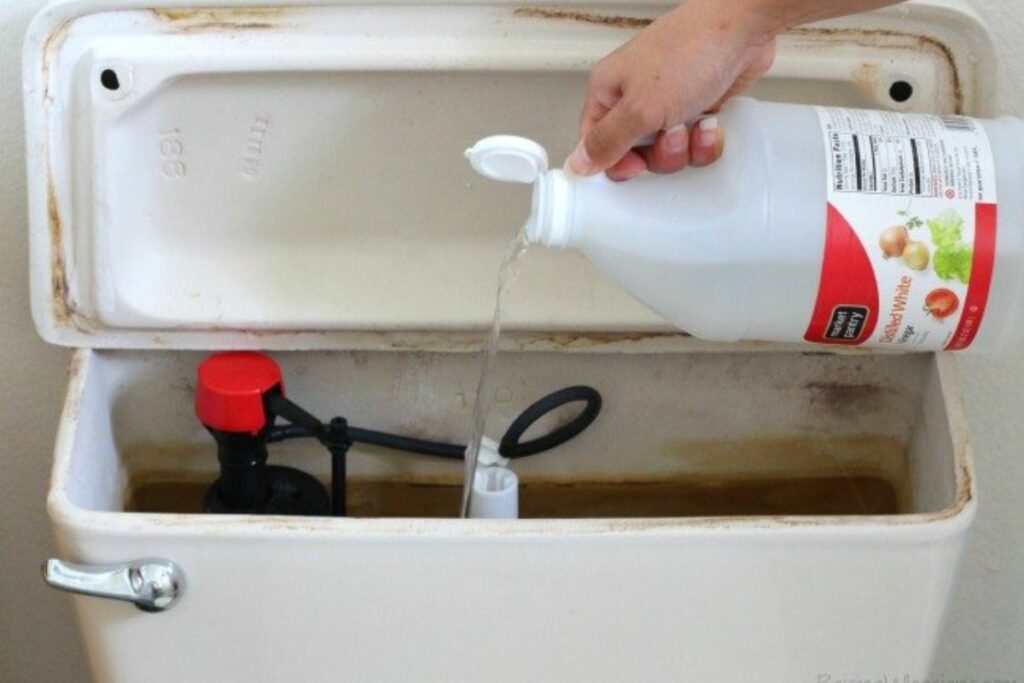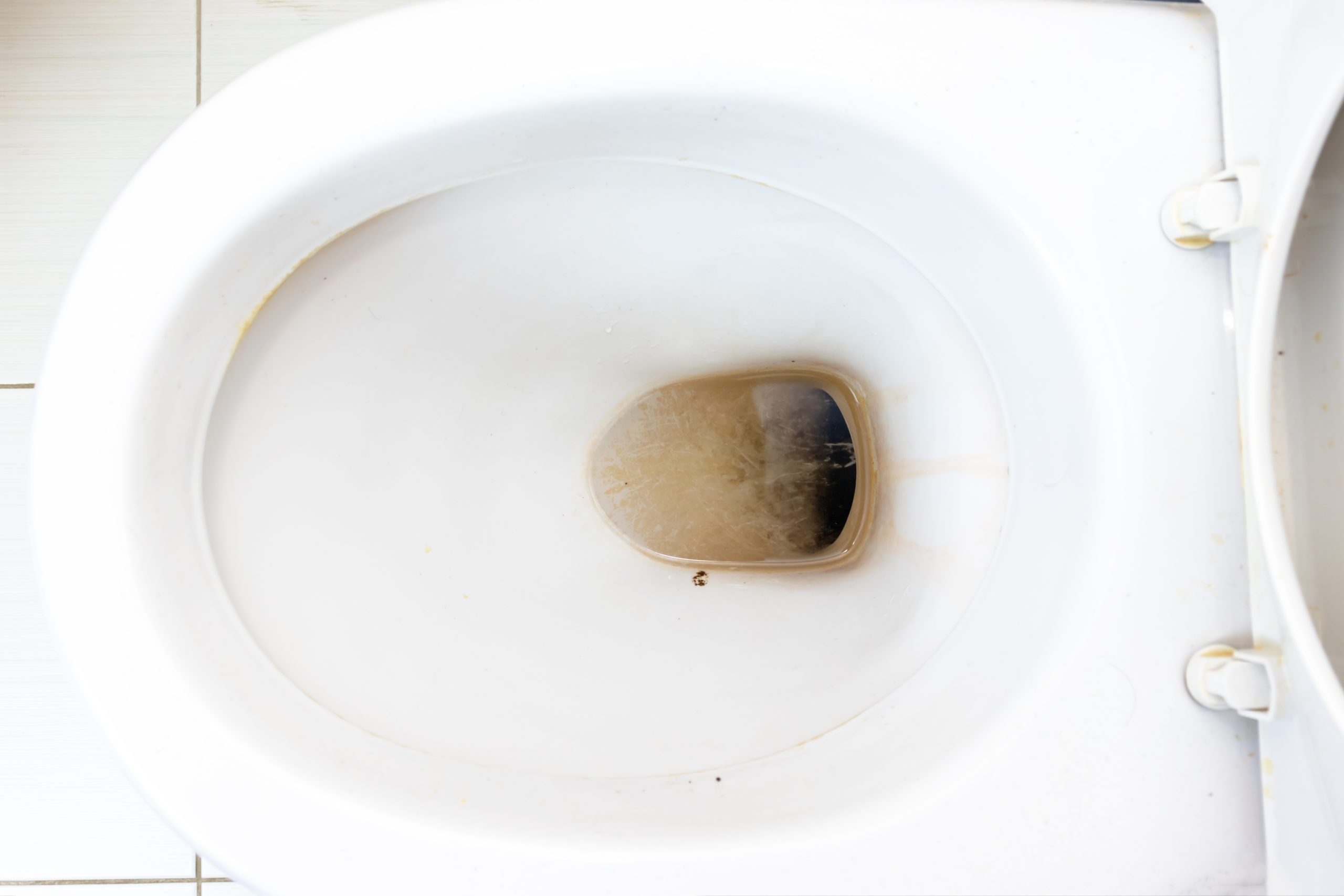Limescale can be the biggest headache for your toilet as it is harmful and can be an eye sore. And things get worse when you keep receiving multiple solutions from people and get confused about which one is the most effective. So, you need the most useful guideline on how to remove limescale from the toilet below the waterline.
You can easily remove the limescale from the toilet below the water level, either with a commercial limescale remover or a natural solution like vinegar or baking soda. Some use acidic solutions or sandpaper as well.
This article will cover in-depth how to ease the process of cleaning this brown mess called limescale from your toilet.
What Causes Limescale to Form in the Toilet?
Tap water is referred to as “hard water” in many places because it contains dissolved calcium and magnesium minerals. When hard water evaporates, the minerals it leaves behind react and produce limescale.
If you want to know how to remove limescale from the toilet, first you need to identify what limescale is.
The hard, chalky substance that gathers at the bottom of your toilet bowl is known as limescale. It mostly contains calcium carbonate. Limescale can be any color, ranging from off-white to a variety of greys, pinks, and reddish browns.

The presence of additional minerals will have a major impact on the color of the limescale deposit. For instance, limescale will most certainly have a reddish-brown appearance if the water contains iron.
How Can the Toilet Be Drained of Water?
One thing that you have to keep in mind is that removing limescale requires you to drain water from the toilet.
A descaling solution will get diluted if it is added to a toilet bowl that is already filled with water. Therefore, draining the water before cleaning is the best method for removing limescale from a toilet below the waterline.
The following steps will show you how to drain water from your toilet:
- First and foremost, you must stop the flow of water.
- You need to flush the toilet to drain most of the water. After the flush, there will still be some water in the toilet bowl. Even this little amount of water is unacceptable since it will make cleaning more difficult.
- You can try scooping out the water with a tiny cup to get rid of it completely. A sponge or a towel can be used to absorb the remaining water. Your toilet bowl ought to be dry and ready at this point.
How to Remove Limescale From the Toilet Below the Water Level
Removing limescale might feel like a daunting task because most toilet cleaners will not work against it. Knowing the right product and technique is the key here.
Different Methods of Removing Limescale
You will need to use a powerful scale remover if the layer of limescale is thick.
You will be able to find a method that works on your particular form of limescale thanks to the wide variety of solutions available on the market. If some of it isn’t eliminated the first time, don’t panic; you may only need to try a new product.
To give the product an opportunity to penetrate all the different levels of that substantial limescale buildup, you should also try repeating the procedure a few times with the same product.
Vinegar
Vinegar is one of those popular natural products that work really well for limescale.

- After flushing the toilet, empty the bowl and then add a bottle of undiluted white vinegar.
- Allow it to sit for at least 4 hours (or longer). You should be aware that even with the toilet seat down, some of the scents may likely leak through, so you’ll probably need to keep the bathroom door closed.
- Once more, you’ll need to use some elbow grease and a specialized brush or scrubber to remove any really difficult stains. Lemon juice can also be used because of its acidic characteristics, which will aid in removing the stains.
- When you’re finished, flush the toilet to hopefully remove any stains. If not, try it again or use a more powerful scale remover.
Baking soda
Baking soda is also another form of natural product for cleaning limescale.
- You must first empty your toilet bowl before using a mixture of 6 teaspoons of baking soda and 2 tablespoons of water. Applying the paste directly to the stains requires it to be on the thick side.
- The limescale may then be removed with a brush when it has dried. In the event that a standard brush is ineffective, you might alternatively use a sanding scrubber.
Coca-cola

You might think of this product as an unorthodox way of cleaning your toilet. But trust us on this that by using proper technique coca-cola does its job very nicely.
There are several instances of using coke’s acid to clean toilets, descale kettles, and in other situations. Coke’s acid will assist in dissolving limescale.
- Start by distributing the cola all the way to the waterline of the bowl. Although there isn’t a precise amount used, a liter of coke should be plenty.
- Allow it for at least six hours or longer, regardless of how much limescale is present.
- The toilet should be scraped with a brillo pad. By flushing, you will finish the procedure, and if it doesn’t work at first go repeat the process.
Sandpaper

- Limescale may be removed using sandpaper. We advise beginning the removal process with a vinegar treatment. After that, sandpaper should be used to remove any remaining limescale for a stunning, flawless white surface.
- Try to put on some mittens when you go to the restroom. Before adding one liter of vinegar and letting it sit for several hours, empty the tank.
- To remove any remaining limescale, start by using mild sandpaper. After that, polish the pitcher with fine sandpaper.
- Flush the plughole to clean it.
Acid
- Empty the bottle of liquid to lower the water level and harm the deposit. Add acid to the plughole.
- At the end of the day or late at night, let the acidic liquid work its magic in the dish.
- Use a gentle brush to scrub the toilet. Continue the cycle by washing everything once a week.
Limescale Remover Tablet

For preventing limescale, limescale tablets are very effective. There are several excellent limescale tablets available on the market nowadays that work nicely.
- The stains and calcium buildup can be effectively removed by dropping the pill into the toilet water and leaving it there overnight or for a few hours.
- Use two tablets and clean with a brush the next day for severe stains.
- They are a lot simpler to use than descaler liquid or white vinegar because they don’t require draining the toilet bowl before use.
How to Stop Limescale From Growing in Your Toilet?
Hard water leaves mineral deposits in the toilet, as was already indicated.
The source of the water in your location determines the hardness of the water, and purchasing a water softener is expensive. To avoid scaling, you may rely on good cleaning practices.
Here are two things you can do to prevent limescale from growing:
- Pouring Vinegar on the Tank

You may avoid mineral deposits and stains from hard water by flushing acidic cleansers down the toilet. White vinegar is the most dependable and cost-effective substance to use, despite some individuals recommending lemon juice.
Once a month, add a cup of white vinegar to the toilet tank. Allow it to sit for 30 minutes before flushing.
- Scrubbing the Whole Bowl
Mineral buildup enters your toilet in the form of soluble substances. However, if these substances accumulate, they will continue to harden on the surfaces of your toilet. In other words, it’s simpler to clean the buildup from last year than it is to scrape away the water stains from last week!
Once a month, use your toilet brush to thoroughly clean the bowl.
FAQ
Does Bleaching Remove Limescale?
Strong stains can be removed using bleach, and it can also clean surfaces. However, it doesn’t really get rid of the limescale. It only makes the discoloration brighter. Since you can’t see it and are unaware of the harm it’s causing in this situation, limescale is more harmful.
Can Limescale be Permanent?
If the calcium deposits are not routinely removed, they might ultimately cause the toilet to become etched. Permanent limescale stains are quite difficult to remove. Therefore, be careful to clean it up within a certain amount of time.
Can Limescale Block the Toilet?
Although limescale buildup might be slow and you won’t see any significant change for a long time, you should still be worried. A toilet that is blocked with limescale deposits will gradually stop functioning as well as it once did until it stops flushing waste down the drain altogether.
Conclusion
Depending on how much limescale is present, the best ways to remove limescale from a toilet below the waterline may vary.
If there is only a thin layer of limescale in your toilet bowl, vinegar, and a thorough cleaning may be sufficient. Stronger cleaners and further cleanings may be necessary for stubborn limescale stains, on the other hand. However, it is not impossible to remove the limescale! Just keep in mind that it is advisable to avoid further accumulation by doing routine maintenance once you get rid of it.

Amos Christen graduated with a bachelor’s degree in Interior Design from Drexel University — Philadelphia, PA. Since 2003, Amos has worked with top interior design professionals in this area, including architects and interior/graphic/lighting designers. As a skilled interior designer, Amos Christen is highly versed in fine arts and crafts and uses that to supplement his main area of expertise. He often publishes articles related to home décor on several websites, including Sprucetoilets.com, Sprucebathroom.com, and Mybesuitedhome.com. He also contributes to leading interior design magazines.
